What people know about health and healthcare and what they do with that knowledge has a major impact on their health and well-being.
When patients are given health information in a way they can understand, they tend to make better health decisions. 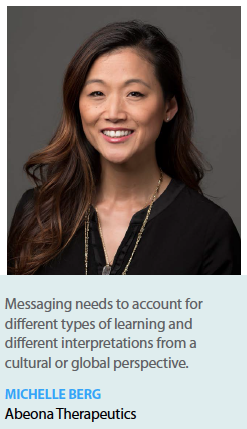 Low health literacy, on the other hand, is a contributing factor to poor outcomes, including hospital readmissions for chronic conditions such as diabetes, heart disease, and cancer. And low health literacy can impact the safe use of medications and adherence.
Low health literacy, on the other hand, is a contributing factor to poor outcomes, including hospital readmissions for chronic conditions such as diabetes, heart disease, and cancer. And low health literacy can impact the safe use of medications and adherence.
“A well-informed patient is best able to interpret his or her own symptoms and signs, which leads to earlier detection of issues and more effective therapy," says William Williams, M.D., president and CEO, BriaCell Therapeutics. “This improves the quality of life and often the duration of life."
Health literacy is defined by the U.S. Department of Health and Human Services and the Institute of Medicine as “the degree to which individuals have the capacity to obtain, process, and understand basic health information and services needed to make appropriate health decisions."
Laurie Myers, global health literacy director at Merck, says the definition of health literacy that’s used most often in the United States focuses on a person’s ability to obtain, access, and use health information to make decisions, but that’s very one-sided and it puts the burden of communication and understanding on the patient.
“We need to update the definition to recognize the two-sided nature of health literacy," she says. “It’s not just the responsibility of the patient to understand; it’s also the responsibility of the person doing the communicating to communicate in a way that can be understood. So much of the focus is around the doctor-patient communication, but in reality, that’s only a small percentage of the time that a patient is making healthcare decisions."
Low health literacy can negatively affect the physical, emotional, and social health of not only patients but their family and friends as well, says Kristina Ellis, executive VP, executive creative director, Giant Creative Strategy.
“It can also be a challenge to healthcare professionals who are trying to deliver the best healthcare experience and outcomes to their patients," she says. “Frustration and failure can result."
Low health literacy results in more preventable hospital visits and admissions, which translates to higher healthcare costs, says Alex Seleny, senior director of portals and patient services, McKesson Specialty Health. “For example, if cancer patients do not understand the purpose of the medication they are taking, how to take it properly or why it is important to stay hydrated, they are much more likely to wind up in the ER."
Experts say the populations most likely to experience low health literacy are older adults, racial and ethnic minorities, people with less than a high school degree or GED certificate, people with low income levels, non-native speakers of English, and people with compromised health status. Education, language, culture, access to resources, and age are all factors that affect a person’s health literacy skills.
But even those in the healthcare industry can face challenges related to understanding healthcare information. 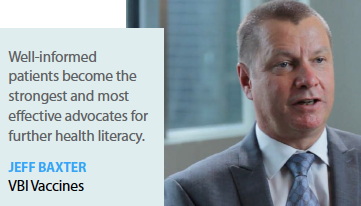 Health information can overwhelm even people with advanced literacy skills. Medical science progresses rapidly. What people may have learned about health or biology during their school years often becomes outdated or forgotten, or it is incomplete.
Health information can overwhelm even people with advanced literacy skills. Medical science progresses rapidly. What people may have learned about health or biology during their school years often becomes outdated or forgotten, or it is incomplete.
“Challenges with health literacy are not just limited to those who don’t do well on a health literacy assessment for instance," Ms. Myers says.
She cites her own example. After her daughter had surgery to remove a birthmark on the leg, Ms. Myers was instructed to limit her daughter’s activity.
“To me, that meant no soccer practice," she says. “That didn’t mean sit on the sofa and put her leg up. I’m somebody who has an MBA in healthcare management, and I misinterpreted the words ‘limit activity.’ We went to a children’s museum and her leg bled. She ended up needing another surgery.
“Every one of us has a story like this, even those of us who work in healthcare day in and day out," Ms. Myers continues. “Low health literacy is certainly more challenging for some groups than others, but it is a challenge for each of us at one point or another."
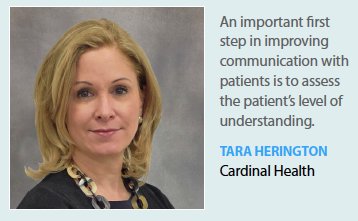 Reading about or listening to health information about yourself or your loved ones is demanding, and it requires the ability to navigate and locate services and providers to understand probability and risk, to organize, manage, and measure medications among other skills, says Kathleen Hoffman, Ph.D., a health communication researcher and writer at Inspire.
Reading about or listening to health information about yourself or your loved ones is demanding, and it requires the ability to navigate and locate services and providers to understand probability and risk, to organize, manage, and measure medications among other skills, says Kathleen Hoffman, Ph.D., a health communication researcher and writer at Inspire.
“What is more, health literacy doesn’t seem to have anything to do with educational attainment or reading ability," she says. “The ability to use health literacy skills is situational. Even under the best circumstances, people leave the physician’s office with just half of the information provided to them. In stressful situations — such as receiving a diagnosis with a poor prognosis — people lose the skills they have. Their attention focuses on the disturbing news, so that less energy is available to absorb peripheral information such as treatment plans."
One of the greatest challenges those in the public health arena face is overcoming low health literacy, says Jeff Baxter, CEO of VBI Vaccines.
“While there are a number of factors that influence the level of public health literacy, the net effect is that an unaware public results in fewer health screenings and fewer precautionary measures against diseases that, ultimately, may be prevented," he says.
One such example of the impact of poor community health literacy that VBI Vaccines has direct experience with is the hepatitis B virus (HBV). HBV is a virus that is 50 to 100 times more infectious than HIV1 and is often spread by people who are not aware they are infected.
(Editor’s note: VBI’s lead program, Sci-B-Vac, which is a prophylactic vaccine to protect against HBV infection, is currently in Phase III clinical development.)
“Well-informed patients become the strongest and most effective advocates for better health literacy," Mr. Baxter says.
The current healthcare landscape is a bit of a perfect storm for many patients, says Katie O’Neill VP, patient engagement solutions, Bionical.
“Apart from navigating health insurance coverage, imagine an environment where healthcare providers spend an average of 16 minutes with each patient; an aging patient population with potential for increased comorbidities; encountering language barriers including English as a second language; educating on complicated medical conditions; reinforcing compliance with complex treatment regimens; and orchestrating coordination of care," she outlines. “And, to make matters worse, 43% of individuals in the United States have basic or below basic health literacy."
Health education resources, Ms. O’Neill says, require the right tone, clear language, customization, and personalization to engage patients to take action. “Appealing to multiple senses and learning principles — auditory, visual, tactile, kinesthetic, self-directed, collaborative and goal-oriented — is key in partnering with the patient for an effective shared-decision-making framework," she says. “Engage to a N=1."
Impact of Low Health Literacy
Only 12% of adults have proficient health literacy, according to the National Assessment of Adult Literacy and 14% of adults (30 million people) have below basic health literacy. These adults were more likely to report their health as poor (42%) and are more likely to lack health insurance (28%) than adults with proficient health literacy.
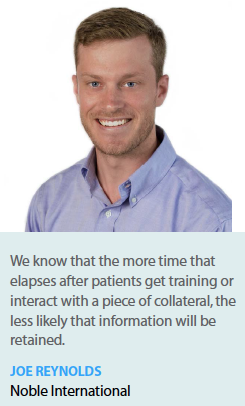 Low health literacy can lead to patient medication errors, safety issues, misunderstandings about their condition, and delays in getting the right diagnosis and care needed. It has also been linked to a greater risk of mortality and an overall lower health status.
Low health literacy can lead to patient medication errors, safety issues, misunderstandings about their condition, and delays in getting the right diagnosis and care needed. It has also been linked to a greater risk of mortality and an overall lower health status.
Doug Noland, executive director of Astellas’ Patient Experience Organization, says when people are having a tough time understanding their care or the treatment plan, they’re less likely to take their medication as directed; they’re less likely to follow their self-care regimens, and ultimately they’re more likely to be hospitalized and stay in the hospital even longer.
“And the costs associated with this are not inconsequential," he adds.
These costs can be measured in both human and financial terms: premature mortality, avoidable morbidity, racial, ethnic and socioeconomic disparities in health and healthcare and enormous avoidable costs. The cost of low health literacy is estimated to be between $106 billion and $238 billion, according to Census Bureau estimates.
A study done by the University of Missouri School of Medicine’s Center for Health Policy published in November 2017 found that the relationship between health literacy and health outcomes is very important. Researchers found low health literacy is a contributing factor for readmission for chronic conditions such as diabetes, heart disease, and cancer.
These researchers estimate, based on cost analysis of previous research, sufficient health literacy could save $105 billion to $175 billion each year.
Dr. Hoffman points out that low health literacy has been called a major source of economic inefficiency in the United States. “The burden of low health literacy in society is carried by all of us," she says.
Ms. Myers says there are other consequences of low health literacy, including the lack of use of preventive services or utilization of healthcare and adherence. Those with low health literacy tend to make less use of preventive care and screening, such as mammograms or flu shots. They tend to enter the healthcare system later when the symptoms or the disease are more advanced. In terms of knowledge and treatment, patients tend to have less knowledge of the chronic conditions and of the optimal management.
In terms of adherence, Ms. Myers says patients may not understand why they need to take medicine and they may or may not necessarily raise the issue of affordable medication in their discussions with physicians.
“These patients are less likely to ask questions of their healthcare provider," she says.
Ms. Hoffman says among patients, for example, with type 2 diabetes, low health literacy is associated with worse glycemic control and increased impairment or loss of vision. Further, research indicates that chronic illness reduces earning, productivity, increases the need for disability benefits, induces early retirement, and has implications for employee turnover.
Low levels of health literacy can lead to more stress, angst, or frustration, says Michelle Berg, VP of patient advocacy, Abeona Therapeutics.
“If there’s not information provided or a concept isn’t understood, sometimes patients will fill in that blank, and that may not be with something that’s accurate or appropriate," she says.
Abeona is focused on developing novel gene and cell therapy approaches for potential treatment of individuals impacted by rare diseases, including Epidermolysis Bullosa, Sanfilippo syndrome, and Batten disease.
“These are diseases that impact children, and these are families experiencing high levels of stress," she says. “So when they’re trying to figure out what something may mean for their child in particular, trying to grasp medical concepts adds to the frustration and to the stress, and it can actually perpetuate misinformation, which is very harmful."
Why Health Literacy is Important for the Pharma Industry
Experts say it is critically important for the pharmaceutical industry to be involved in disseminating information on diseases, and companies have a significant role to play in health promotion and in disease education and prevention.
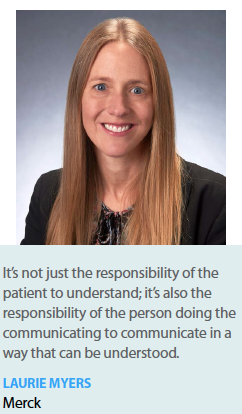 Health literacy impacts the entire prescription process, from getting prescriptions filled, or refilled, to actually taking medications as prescribed.
Health literacy impacts the entire prescription process, from getting prescriptions filled, or refilled, to actually taking medications as prescribed.
The life-sciences industry can play a unique role in improving health literacy by engaging both physicians and patients, Dr. Hoffman says. One strategy is to involve providers in health literacy via in-service training. Teaching culturally based lifestyle and self-management or motivational interviewing to improve patient self-efficacy are a few examples.
“Engaging patients when they are in the information-seeking stage is another strategy that the life-sciences industry could implement," Dr. Hoffman says. “Smartphone applications that help patients record their symptoms or help to keep patients on track with their medications would also benefit patients."
She says by incorporating patient feedback through multiple focus groups and leveraging established best practices in health literacy, patient package inserts have been created that improved comprehension by those with poor to adequate health literacy to more than 85%.
“Testing educational and marketing materials for their usability, suitability, readability, and comprehension are important steps to better health outcomes for patients," Dr. Hoffman says.
Industry experts say communication of health information needs to start with plain language, which is communication that can be understood the first time it is read or heard. Material in plain language divides complex concepts into understandable pieces, places the most important points first, removes and/or defines jargon, and uses active voice.
Audience characteristics such as demographics, cultural beliefs, and attitudes drive the creation of health literate communication. Evaluation and testing the messages with the audience steers its design so that patient understanding is assured. Visual depictions of mathematical concepts such as risk are used to help increase comprehension.
The opportunity for pharmaceutical companies is to optimize clear communications whenever they directly or indirectly communicate with patients.
“Health literacy is in some ways a misnomer because the word literacy is a bit misleading," Merck’s Ms. Myers says. “People focus immediately on the language and the literacy component and they think it’s all about people who don’t read well."
However, she says, it’s more than that; patients need information they can understand so they can be informed and make a decision. To accomplish this goal, Merck limits what’s provided in a particular communication to the important information it wants to communicate and provides links for additional information.
“Everyone benefits from a clear simple document," she says. “Through our testing, we have learned that regardless of background, we all appreciate simple and clear communications."
She says Merck has also found that formatting and white space are incredibly important. “We have FDA-approved language that we need to work with," Ms. Myers explains. “So formatting, white space, and even adding a table of contents can help improve the navigability of that information."
Ms. Myers points out that pharmaceutical companies communicate with patients multiple times throughout the drug development cycle from informed consent forms to clinical trial materials.
“The question is: how do we create language that helps patients understand what the drug is for, how to take it, what are the potential side effects, and what do they do about it if there are potential side effects?" she asks.
Labeling, Ms. Myers says, is an important opportunity to address these concerns.
“Patient labeling is the foundation of everything we say to a patient about our medicines later," she says. “This is why it’s so important to get it right."
Merck has a process to make sure its labels are health literate, including consulting with health literacy experts as well as with patients.
“Merck drafts the label and then we send it to health literacy experts for their input," Ms. Myers explains. “Then we conduct focus groups with patients across a range of health literacy levels to see if there’s anything that could potentially be confusing about the information on the label. We view this process as a potential model for others in the industry as well as for the FDA."
The company has tested patient labels with almost 800 people across different levels of health literacy and has been able to consistently achieve greater than 90% comprehension among people across the range.
Merck also provides internal training across the organization as a way to embed health literacy into what people at the company do. So far, the company has trained about 450 employees across various divisions.
Research by Noble International has found that package inserts and other instructions that are generally relied upon for patient education often are not read by patients, says Joe Reynolds, research manager at Noble.
“We try to understand the cognitive and emotional level of patients," he says. “We try to understand the broader patient experience and the barriers patients may experience for a specific therapy."
He points out that it is important to look at message decay. “We know that the more time that elapses after patients get training or interact with a piece of collateral, the less likely that information will be retained and recalled," Mr. Reynolds says. “We like to look for ways that we can help patients accelerate learning and mitigate that learning erosion."
Over the last 18 months, Astellas has been revisiting all of the materials developed for patient consumption to ensure that the company is communicating with patients on a level that they can understand and take action on, Mr. Noland says.
“We’re addressing a lot of the psychosocial issues and trying to be sure that we’re communicating at a level that the average American can understand," he says. “We have health literacy standards for Astellas that we’ve deployed across our organization. We’ve trained more than 100 employees on the implementation of these and put in place guidance to help us follow through on our aspirations. We want to ensure that our employees can help to create resources for patient or caregiver consumption that can be understood. Patients need to understand how to take their medicines and perhaps determine if and how to get involved in a clinical trial."
Mr. Noland says the company aims to have materials written at the seventh-grade reading level.
“These efforts also include things like numeric literacy to ensure that we’re presenting numbers in a way that people can understand," he says. “We’ve also developed a library of icons that have been vetted and tested for understanding."
Ms. Ellis says an important part of the job as marketers is to provide information that patients can trust.
“An abundance of healthcare information is available to patients, but unfortunately not all of this information is accurate or regulated," she says. “In addition, the information that is available is often not written at a level that is understandable to the layperson, which may cause unnecessary confusion or erroneous expectations. We can help overcome these effects by providing easily digested, accurate information. The materials we create are supplemental to the conversations patients have with their healthcare providers — conversations that can be forgotten or misinterpreted."
Ms. Ellis says having easy-to-understand materials for patients to refer back to can enhance their experience and improve outcomes.
McKesson’s Mr. Seleny says it’s important to realize that to improve health literacy, marketers can’t just digitize a printed tool and drop it into an app.
“While it may not be classic health literacy, patient videos can be a very powerful way to educate health consumers," he says. “Moreover, reading levels do not impact a patient’s ability to understand a complex health issue from a video. Today, the second-biggest search engine is YouTube, demonstrating the importance of video as an educational channel."
Mr. Seleny says research shows that videos do not have to be shot in movie quality to be effective. Simple videos featuring a patient who has been through the same treatment journey may be the most impactful. In fact, patients may provide the best voice to penetrate the emotion and highlight key things they need to know.
“The key will be to move beyond static interactions," Mr. Seleny says. “For example, while a physician may be able to evaluate a rash from a photo, if they have a FaceTime conversation, she may also notice that the patient’s eyes are yellow and jaundiced and needs to come into the office. Additionally, if the patient is sitting in a dark room surrounded by pizza boxes, they may need a visit from a social worker. Ultimately, this can result in better patient management and better care."
Improving communications with patients requires assessing patients’ level of understanding, says Tara Herington, VP, Cardinal Health Sonexus, an access and patient support division.
“Educational materials that can be easily understood by patients and care partners can play an important role in helping to reduce confusion and enable patients to better understand their health condition," she says. “The U.S. National Library of Medicine recommends using a sixth-grade reading level when creating patient materials."
She says the process of developing clear and concise health content can be challenging.
“Oftentimes the end product appeases the legal team, but is woefully inadequate for conveying health information in a plain language format easily understood by a majority of patients," Ms. Herington says. “Pharmaceutical companies creating these materials should involve patients in the development process and test content with patients before they are broadly distributed."
Using plain language is a strategy for making written and oral information easier to understand. It is one important tool for improving health literacy. But experts stress that language that is plain to one set of readers may not be plain to others. It is critical to know your audience and have them test your materials before, during, and after they are developed.
Companies should aim for consistency in terminology, Ms. Berg says.
“Calling things by different names with slightly different definitions only causes more confusion, and causes more angst, stress, and potentially perpetuation of just misinformation," " she says.
Abeona, she says, makes sure to include layperson terminology in materials it provides, including press releases.
“We break down the concepts and provide definitions where appropriate, with additional links to resources where appropriate," she says. “We try to anticipate and pre-answer questions and explain concepts in a very clear health-literate manner so that when an individual or a family member reads a press release or other material they can understand it."
Feedback from patient groups has been positive, Ms. Berg says.
Abeona, she says, recently revamped its website and updated the patient and family page to be more patient-friendly. Ms. Berg stresses patient materials should be free from jargon and acronyms and include terminology that is easy to understand.
“We’re trying to teach, educate, and enable patients to communicate better with physicians," she says. “This helps build confidence in that individual or family’s understanding and it helps to reinforce that they are trying to take hold of their own medical destiny."
Ms. Berg points out that people learn differently, and complicated medical concepts may need to be presented in various formats.
“Some people might learn from reading information, some might need to hear the information, and some might need to go through some type of exercise to actually be able to grasp the concepts and apply the information," she says. “Messaging needs to account for different types of learning and different interpretations from a cultural or global perspective, which is not always easy to do."(PV)
~~~~~~~~~~~~~~~~~~~~~~~~~
Patients’ Voices: Literacy
Diana Cleaveland
CoEhlers-Danlos New England/
Massachusetts Support Group
Ehlers-Danlos Patient
@OriaBlue
Elevating health literacy should be achieved via the use of all means possible: the hosting of symposiums and classes, interviews with patient advocates, the provision of awareness tables and events, newsletter segments on rare diseases, improved communication between patients’ chosen physicians and hospitalists and new providers: The sky is the limit. Communicating respectfully to patients by assuming they are telling the truth unless proven otherwise, is key. Improving health literacy results not only in a better sense of trust and communication between all involved, but also in a more profitable bottom line for any health care organization.
 Grace Cordovano, Ph.D.
Grace Cordovano, Ph.D.
Enlightening Results
Cancer Patient Advocate
@GraceCodovano
There are severe consequences to poor health literacy. Individuals are not sure how to navigate or coordinate care in the labyrinth of our healthcare system. The majority of patients do not understand the basics of their insurance coverage. People do not know why procedures are ordered, medications are prescribed, or how to find a specialist. Many do not know how to obtain their medical records or fill out patient paperwork.
Governing policies are implemented with little understanding of the impact on patients and their loved one’s daily lives. Developers are launching innovations without an understanding of the patient or clinician experience.
 Dan Diaz
Dan Diaz
APCER Life Sciences
ALS Patient
PharmaVOICE 100 Honoree — 2015
In my background, with my ALS, I found that the ALS Society in Philadelphia and New York/ New Jersey were the best experts and had information about many trials. I found the patients who are involved in the society had a lot of knowledge. However, providers who were not involved in global studies and who were only involved in their studies, left many patients out. Health literacy also means that providers need information about the benefits of studies.


















